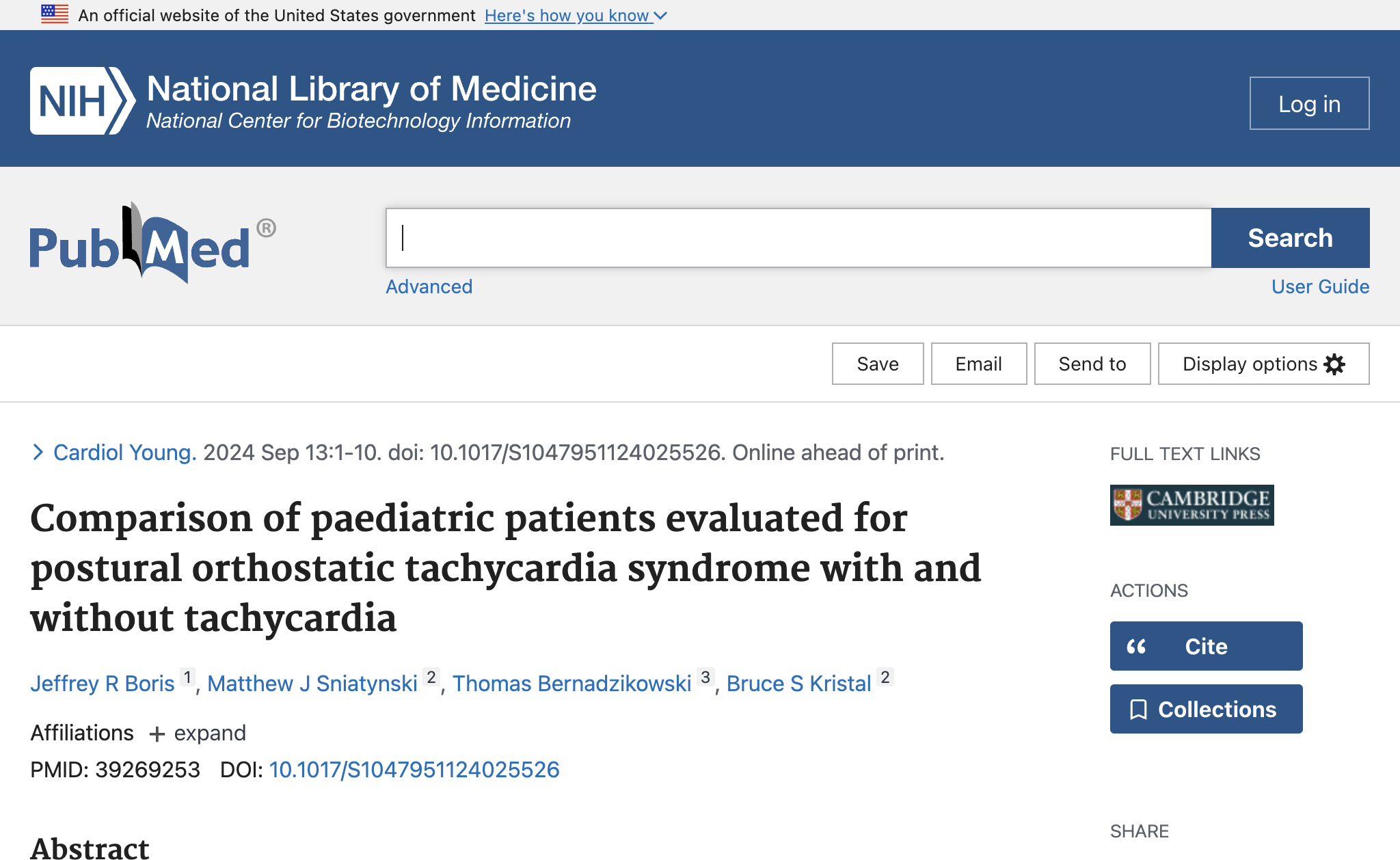Comparison of paediatric patients evaluated for postural orthostatic tachycardia syndrome with and without tachycardia.
This study investigates differences between pediatric patients with postural orthostatic tachycardia syndrome (POTS) with and without tachycardia. Patients were categorized based on their peak upright heart rates into "low heart rate" (less than 100 bpm) and "high heart rate" groups. Analysis of 729 subjects revealed that the low heart rate group was diagnosed slightly later, and they showed a smaller heart rate increase compared to the high heart rate group. Notably, aside from palpitations, there were no significant differences in symptom types or frequency between the groups. The findings indicate that increased heart rate does occur in these patients, but not necessarily tachycardia, suggesting that maximal heart rate isn't a crucial determinant of symptom prevalence in pediatric POTS.
